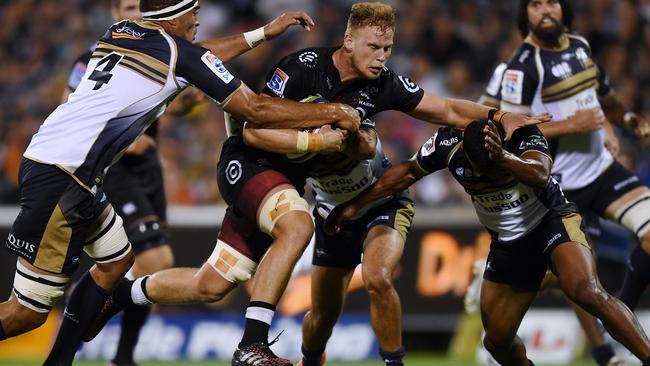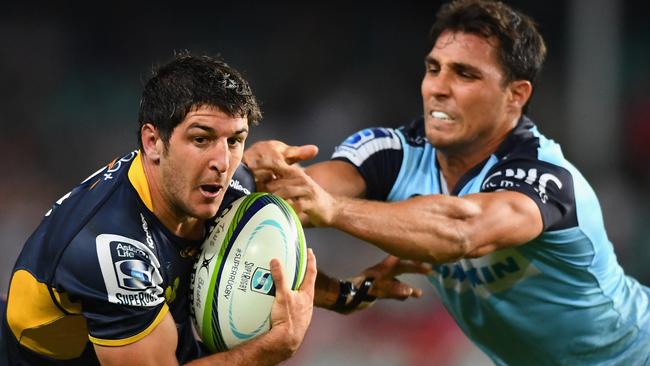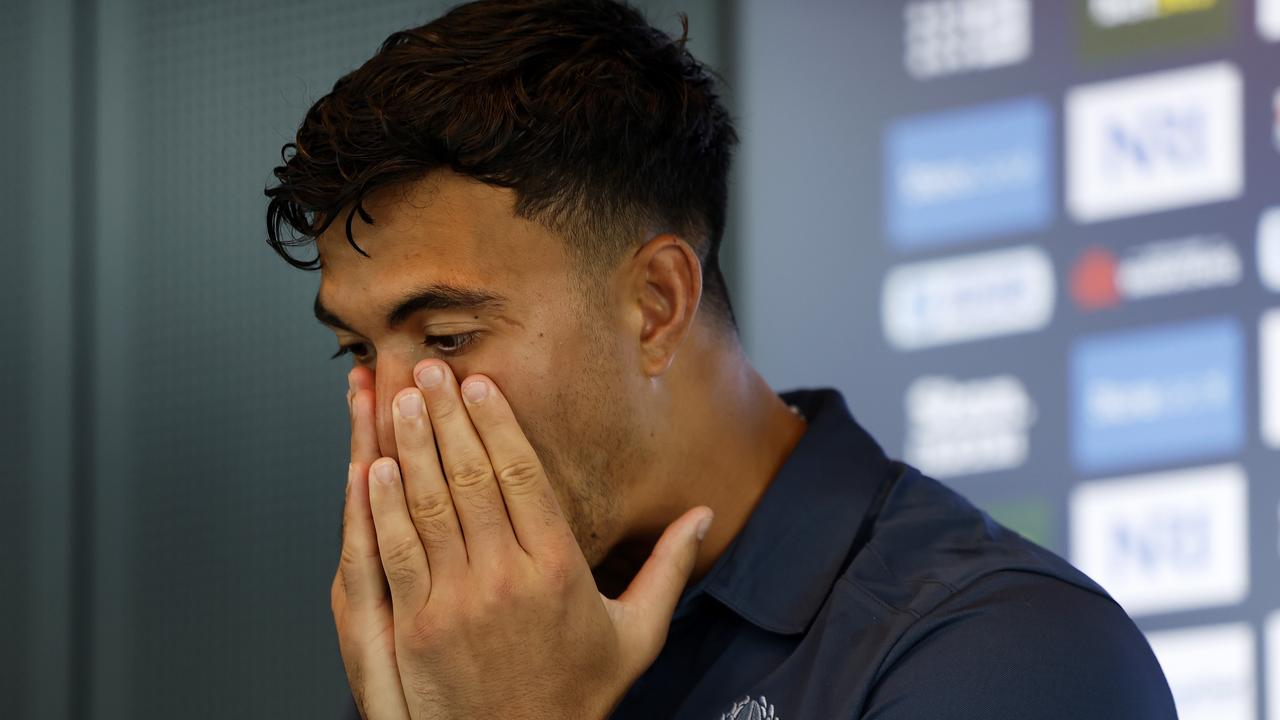Simpler model could improve Super Rugby and save Australian team from axe
CHANGING Super Rugby into a simplified three conference model, which could keep five Australian teams and see more local derbies, has been described as a “round peg-round hole” solution.

Super Rugby
Don't miss out on the headlines from Super Rugby. Followed categories will be added to My News.
CHANGING Super Rugby into a simplified three-conference model, which could keep five Australian teams and return a full deck of lucrative local derbies, has been described as a “round peg-round hole” solution for the battling competition.
The shape of Super Rugby in 2018 and beyond will be decided at SANZAAR meetings on Friday and Saturday (AEDT) in London.
After a review into the unpopular 18-team, four-conference structure, the ARU will take a range of options to the meetings; including the possibility of cutting one of Australia’s five franchises.
But whether the ARU swings the axe or not will likely come down to whether South Africa arrive at the meetings prepared to cut two teams, which appears increasingly unlikely.
A report by Accenture last year put forward alternative competition models of 15, 16 and 18 teams but there is no ARU interest in the 16-team option; which would only arise if Australia and South Africa dropped one team each.
Outside contraction to 15 teams then, it is a strong possibility the main business in London will be thrashing out a solution to make an 18-team competition work.

There is speculation the ARU will put forward a preference for a trans-Tasman conference within Super Rugby, which would play internally before meeting the best of a conference of South African/Argentina/Japan in the finals.
This is the strategic direction advocated by many leading officials, for many years, but the ARU will find it tough to get up given New Zealand are reluctant to isolate South Africa.
A solution of restructuring Super Rugby into three conferences of six teams — with Japan joining Australia’s and New Zealand folding in Argentina — may prove the agreeable option for all parties; even if only as a short-term fix before major surgery at next broadcast rights deal in 2020.
A three-by-six model would make the competition easier to understand, return some missing fairness and allow cashed-strapped teams to stage more valuable local derby matches.
Each Australian team (and Japan) could potentially play each other home and away, and then play either three or four teams from each the other two conferences.
Each conference winner could still get a home final, but instead of Africa getting two guaranteed home playoff spots, the fourth quarter-final host could be the next-best team on points.
The model would also solve the ridiculous scenario where one African conference does not play New Zealand teams each year.
The Kiwis would have to travel to Argentina but with Auckland one of the few cities to do direct flights to Buenos Aires (12 hours), it’s roughly the same as Australians to Tokyo (8-12 hours).
The Rugby Union Players Association, who are pushing hard for Australia to keep five teams, believe the three-by-six model is a strong option for the ARU to pursue in London.
“There is consensus from all stakeholders that the current 18-team competition model lacks integrity which weakens the economic position and interest in Super Rugby,” RUPA chief executive Ross Xenos said.
“Reducing Australian representation in Australian rugby doesn’t solve any of the game’s challenges. It only reduces our market share and future growth prospects even further.
“But we also understand that a round peg needs a round hole and an improved competition model to sustain five teams is also required. Revamping the current, four-conference model to three conferences of six would improve the overall integrity of the competition
“It would increase the fairness of crossover games, provide more local derbies and allow for a much simpler finals qualification process.”
Originally published as Simpler model could improve Super Rugby and save Australian team from axe


